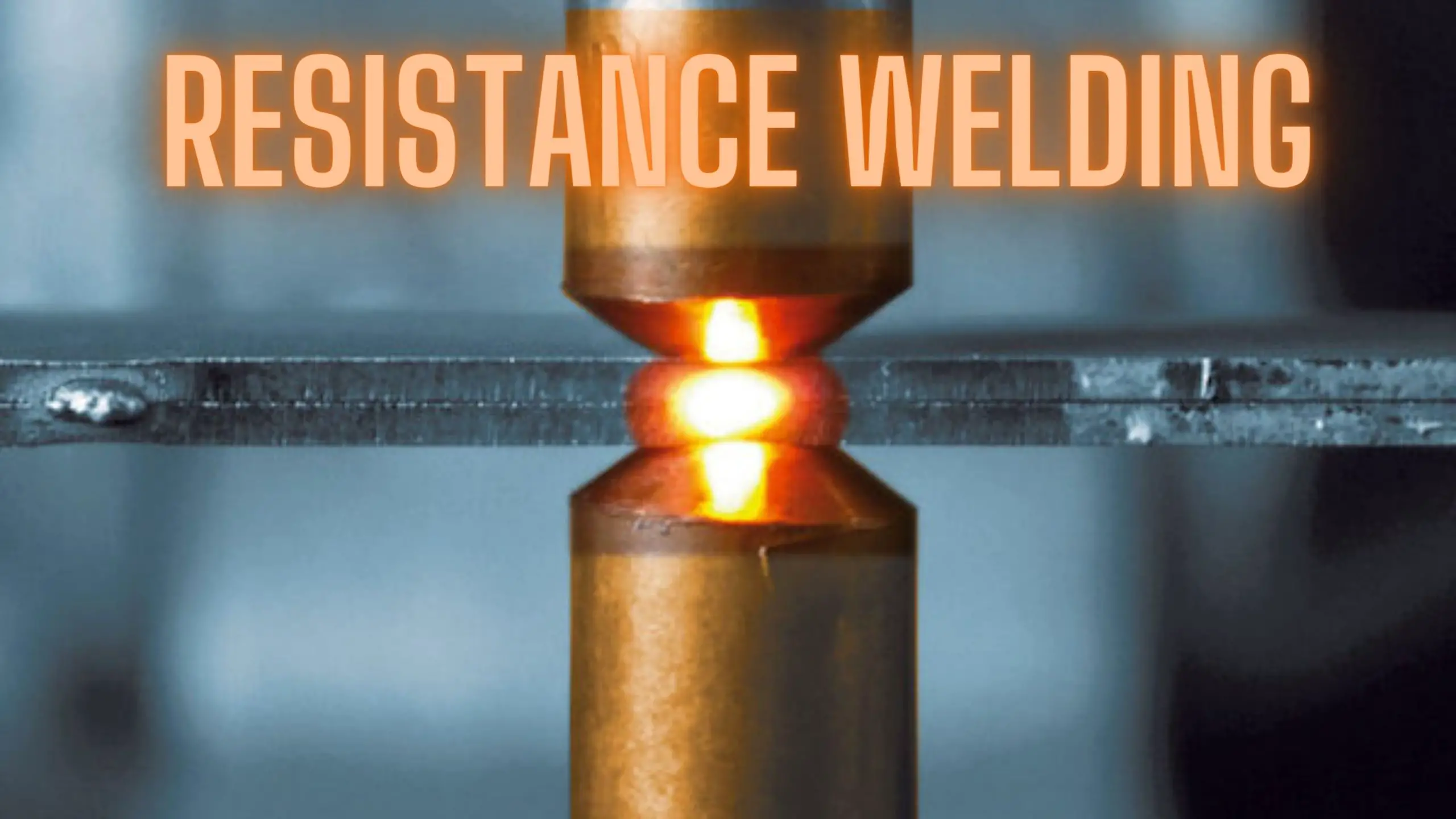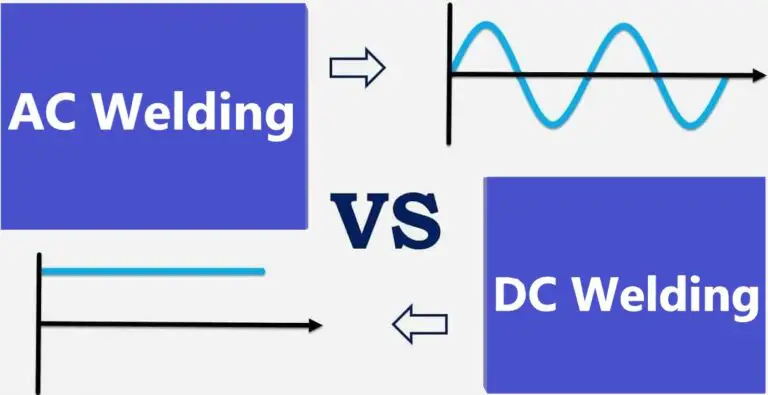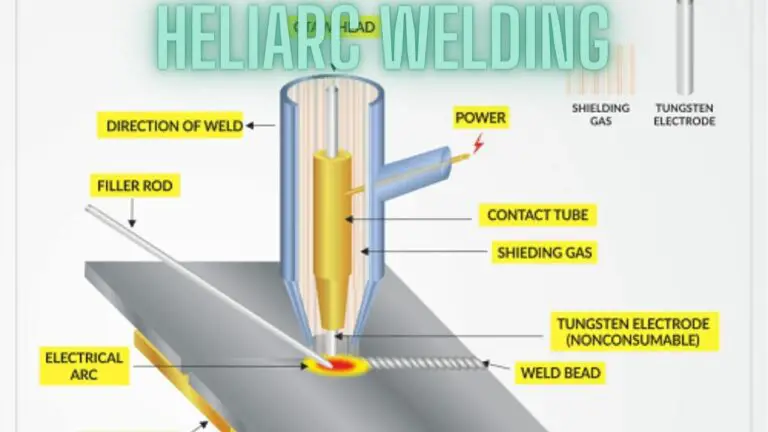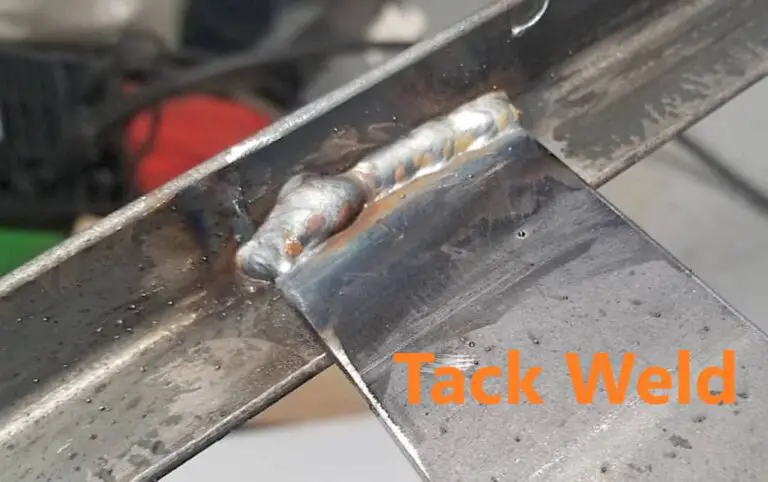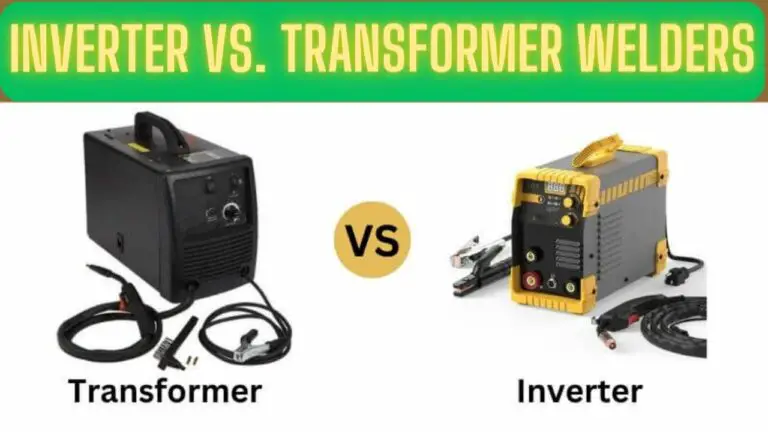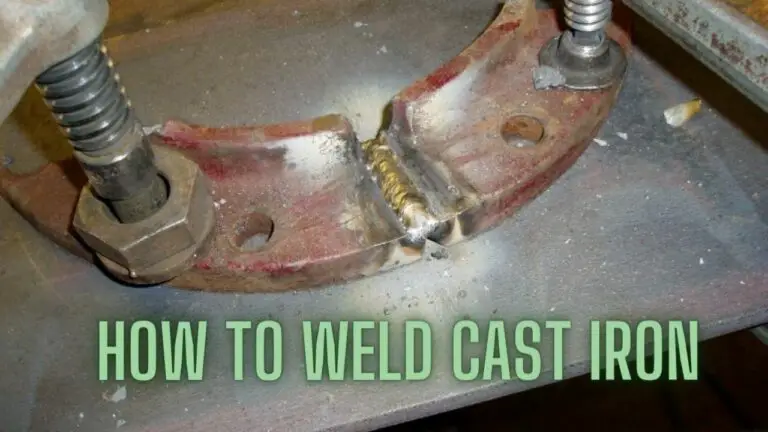Resistance Welding: Joining Metals with Precision and Efficiency
Introduction
Resistance welding is a specialized welding process that joins materials together through the application of heat generated by electrical resistance. Unlike traditional welding methods that use an external heat source, such as an arc or flame, resistance welding relies on the resistance created when an electrical current passes through the materials to be welded.
This welding technique is widely used in various industries, including automotive, aerospace, electronics, and manufacturing, due to its ability to produce strong, reliable welds quickly and efficiently. It offers several advantages, such as high welding speeds, minimal distortion, and the ability to weld a wide range of materials, including metals and alloys.
In resistance welding, two or more workpieces are clamped together between two electrodes. When an electrical current is passed through the electrodes, the resistance at the interface between the workpieces generates heat, causing localized melting and fusion. Once the desired weld is achieved, the current is discontinued, and the weld cools and solidifies, forming a strong bond between the workpieces.
This introduction serves as a foundation for understanding the principles and applications of resistance welding, which will be explored in greater detail throughout this guide. By delving into the intricacies of this welding process, we aim to provide you with the knowledge and insights needed to effectively utilize resistance welding in your manufacturing or fabrication endeavors.
Principles of Resistance Welding
Resistance welding operates on several key principles that govern the process and ensure effective joining of materials. Understanding these principles is essential for achieving high-quality welds and optimizing the performance of the resistance welding process. Here are the fundamental principles:
- Electrical Resistance: Resistance welding relies on the inherent resistance to electrical current flow in the materials being welded. When current passes through the workpieces held between the electrodes, resistance generates heat at the interface, causing localized melting and fusion.
- Joule Heating: The primary mechanism responsible for generating heat in resistance welding is Joule heating. This occurs when electrical energy is converted into heat as it encounters resistance within the workpieces. The heat generated is proportional to the square of the current and directly proportional to the resistance.
- Contact Resistance: Contact resistance refers to the resistance at the interface between the electrodes and the workpieces. It plays a crucial role in determining the amount of heat generated and the efficiency of the welding process. Lower contact resistance results in more effective heat generation and improved weld quality.
- Pressure Application: In resistance welding, pressure is applied to ensure intimate contact between the workpieces and promote heat transfer. Pressure helps to overcome surface irregularities, remove surface contaminants, and forge the weld nugget, resulting in strong and durable joints.
- Time and Current Control: Controlling the duration and magnitude of the electrical current passing through the workpieces is essential for achieving consistent weld quality. The selection of appropriate welding parameters, including current magnitude and duration, is based on factors such as material type, thickness, and desired weld characteristics.
- Weld Nugget Formation: The area where localized melting and fusion occur is known as the weld nugget. The size and shape of the weld nugget depend on various factors, including welding parameters, material properties, and electrode design. Proper control of welding parameters is crucial for achieving the desired weld nugget size and geometry.
- Cooling and Solidification: After the welding current is discontinued, the weld nugget cools and solidifies, forming a strong bond between the workpieces. Proper cooling is necessary to prevent excessive heat-affected zones and ensure the integrity of the weld joint.
Understanding these principles enables welders and engineers to optimize the resistance welding process, control weld quality, and troubleshoot any issues that may arise during welding operations. By adhering to these principles, manufacturers can achieve consistent and reliable welds across a wide range of applications.
Types of Resistance Welding
Resistance welding encompasses various techniques, each tailored to specific applications and materials. Here are the primary types of resistance welding:
- Spot Welding:
- Description: Spot welding is one of the most common forms of resistance welding, widely used in automotive, aerospace, and manufacturing industries.
- Process: In spot welding, two or more overlapping metal sheets are clamped together between two electrodes. An electrical current is then passed through the electrodes, creating resistance and generating heat at the interface between the sheets. This localized heat melts the material and forms a weld nugget.
- Applications: Spot welding is ideal for joining thin metal sheets, such as automotive body panels, appliance housings, and sheet metal fabrications.
- Seam Welding:
- Description: Seam welding is a continuous welding process used to create long, continuous welds along the length of overlapping metal sheets.
- Process: In seam welding, two or more metal sheets are continuously fed between rotating wheel electrodes. As the sheets pass through the electrodes, an electrical current is applied, generating heat and creating a continuous seam weld along the joint.
- Applications: Seam welding is commonly used in the manufacture of cylindrical or tubular components, such as fuel tanks, pipes, and pressure vessels.
- Projection Welding:
- Description: Projection welding is a variation of spot welding used to weld studs, nuts, or other fasteners to metal components.
- Process: In projection welding, one of the workpieces typically contains a raised feature, or projection, which concentrates the current and generates heat at the point of contact. The electrode then applies pressure to forge the weld joint between the projection and the mating surface.
- Applications: Projection welding is commonly used in automotive, construction, and appliance industries for attaching fasteners to metal components.
- Flash Welding:
- Description: Flash welding, also known as resistance butt welding, is a process used to join two metal components end-to-end.
- Process: In flash welding, the two workpieces are clamped together between two electrodes. When an electrical current is passed through the workpieces, the ends are heated until they reach a plastic state. The application of pressure then forces the molten material out, creating a flash. Once the flash is formed, the pressure is increased, forging the two workpieces together to form a solid weld.
- Applications: Flash welding is commonly used in the production of wire products, rods, pipes, and tubes.
- Resistance Spot Welding:
- Description: Resistance spot welding is a versatile welding process used to join overlapping metal sheets at discrete points.
- Process: Similar to spot welding, resistance spot welding involves clamping two or more metal sheets between two electrodes. An electrical current is then passed through the electrodes, generating heat at specific spots where the sheets overlap. The heat melts the material and forms weld nuggets at each spot.
- Applications: Resistance spot welding is widely used in automotive, aerospace, electronics, and appliance industries for joining sheet metal components, wire mesh, and electrical contacts.
Each type of resistance welding offers unique advantages and is selected based on factors such as material type, thickness, joint geometry, and production requirements. By understanding the characteristics and applications of each type, manufacturers can choose the most suitable resistance welding technique for their specific needs.
Equipment and Tools
Resistance welding requires specialized equipment and tools to ensure precise control, safety, and efficiency during the welding process. Below are the essential components needed for resistance welding:
- Welding Machine:
- Resistance welding machines come in various configurations, including spot welders, seam welders, and projection welders.
- The welding machine generates and controls the electrical current used for welding, providing features such as current adjustment, timing controls, and pressure regulation.
- Electrodes:
- Electrodes are the components that conduct electrical current to the workpieces and apply pressure during welding.
- They come in different shapes and sizes depending on the welding process and application.
- Electrode materials should have high electrical conductivity, thermal conductivity, and wear resistance to withstand the rigors of resistance welding.
- Control Systems:
- Modern resistance welding machines are equipped with sophisticated control systems that regulate welding parameters such as current, time, and pressure.
- Control systems ensure consistent weld quality and allow for precise adjustment of welding parameters based on material type, thickness, and joint configuration.
- Cooling Systems:
- Resistance welding generates heat during the welding process, necessitating cooling systems to maintain optimal operating temperatures.
- Water-cooled electrodes and welding machine components help dissipate heat and prevent overheating during prolonged welding operations.
- Fixturing and Clamping Devices:
- Fixturing and clamping devices hold the workpieces in place during welding, ensuring proper alignment and contact between mating surfaces.
- They come in various configurations, including manual clamps, pneumatic clamps, and robotic fixtures, depending on the application and production requirements.
- Safety Equipment:
- Safety equipment is essential to protect operators from hazards associated with resistance welding, such as electrical shock, heat exposure, and flying debris.
- Personal protective equipment (PPE) may include insulated gloves, safety glasses, welding helmets, and protective clothing.
- Maintenance Tools:
- Maintenance tools are necessary for routine upkeep and troubleshooting of resistance welding equipment.
- Common maintenance tools include wrenches, screwdrivers, wire brushes, and electrode dressers for cleaning and adjusting electrodes.
- Auxiliary Equipment:
- Auxiliary equipment such as transformers, capacitors, and transformers may be required to optimize the performance of resistance welding machines and ensure compatibility with specific applications.
By ensuring that you have the necessary equipment and tools for resistance welding, you can perform welding operations safely, efficiently, and with high-quality results. Regular maintenance and inspection of equipment are also essential to maximize equipment lifespan and minimize downtime.
Materials and Applications
Resistance welding is a versatile process capable of joining a wide range of materials, from metals to alloys and even some non-metallic materials. The following are common materials used in resistance welding and their respective applications:
- Steel:
- Applications: Steel is one of the most commonly welded materials in resistance welding. It finds extensive use in automotive manufacturing for welding body panels, frames, and structural components. Steel is also used in construction, appliances, and machinery fabrication.
- Aluminum:
- Applications: Aluminum offers excellent strength-to-weight ratio and corrosion resistance, making it suitable for various applications in automotive, aerospace, and consumer electronics industries. In automotive manufacturing, aluminum is used for welding lightweight body panels, heat exchangers, and structural components.
- Copper and Brass:
- Applications: Copper and brass are commonly used in electrical and electronic applications due to their high electrical conductivity. Resistance welding is used to join copper and brass components in electrical wiring, connectors, and circuit boards.
- Stainless Steel:
- Applications: Stainless steel offers excellent corrosion resistance and is widely used in industries such as food processing, chemical processing, and medical equipment manufacturing. Resistance welding is employed to join stainless steel components in pipelines, tanks, and surgical instruments.
- Nickel Alloys:
- Applications: Nickel alloys are known for their high temperature and corrosion resistance, making them suitable for demanding applications in aerospace, power generation, and chemical processing industries. Resistance welding is used to join nickel alloy components in turbine blades, heat exchangers, and reactor vessels.
- Titanium:
- Applications: Titanium is prized for its high strength-to-weight ratio and corrosion resistance, making it a preferred material in aerospace, medical, and marine applications. Resistance welding is used to join titanium components in aircraft structures, surgical implants, and marine hardware.
- Plastics:
- Applications: Certain types of plastics can be joined using resistance welding techniques such as ultrasonic welding and hot plate welding. These processes are used in industries such as automotive, packaging, and medical devices for joining plastic components with high precision and strength.
- Hybrid Materials:
- Applications: In recent years, hybrid materials such as dissimilar metal combinations and metal-matrix composites have gained popularity for their unique properties. Resistance welding techniques are used to join hybrid materials in applications ranging from automotive lightweighting to electronic packaging.
By understanding the properties and applications of different materials suitable for resistance welding, manufacturers can select the most appropriate materials and welding techniques for their specific needs. This enables the production of high-quality welds with optimal strength, durability, and performance across a wide range of industries and applications.
Process Parameters
Resistance welding involves controlling several key parameters to achieve optimal weld quality and performance. Understanding and properly adjusting these parameters are essential for producing consistent and reliable welds. The primary process parameters include:
- Current (Amperage):
- The electrical current passing through the workpieces determines the amount of heat generated during resistance welding.
- Higher currents result in increased heat generation and larger weld nuggets, while lower currents may lead to incomplete fusion.
- The selection of current depends on factors such as material type, thickness, and desired weld characteristics.
- Time (Welding Cycle):
- The duration of the welding cycle, often measured in milliseconds, determines the length of time the current is applied to the workpieces.
- Longer welding times allow for greater heat penetration and fusion depth, while shorter times may be sufficient for thin materials or quick welding applications.
- Optimal welding times are determined through experimentation and testing, considering factors such as material properties and joint configuration.
- Pressure:
- Pressure is applied to the workpieces during resistance welding to ensure intimate contact between mating surfaces and promote heat transfer.
- Higher pressure levels help to overcome surface irregularities, remove surface contaminants, and forge the weld nugget, resulting in strong and durable joints.
- Pressure is typically applied using pneumatic or hydraulic systems and should be carefully controlled to avoid damaging the workpieces.
- Electrode Force:
- Electrode force refers to the mechanical pressure applied by the welding electrodes to the workpieces.
- Proper electrode force is essential for maintaining consistent contact between the electrodes and workpieces, ensuring uniform heat distribution and weld quality.
- Excessive electrode force can deform or damage the workpieces, while insufficient force may result in poor contact and inconsistent welds.
- Contact Resistance:
- Contact resistance refers to the resistance at the interface between the electrodes and the workpieces.
- Lower contact resistance results in more effective heat generation and improved weld quality.
- Contact resistance can be affected by factors such as surface condition, cleanliness, and electrode design, and should be minimized to optimize welding performance.
By carefully controlling and adjusting these process parameters, welders can achieve the desired weld characteristics, including strength, penetration, and appearance, while minimizing defects and ensuring consistent results. Experimentation, testing, and monitoring are essential for optimizing process parameters and achieving optimal weld quality.
Safety Precautions in Resistance Welding
Resistance welding involves the use of high electrical currents, mechanical pressure, and potentially hazardous equipment. To ensure a safe working environment and prevent accidents, it’s essential to observe the following safety precautions:
- Training and Certification:
- All personnel involved in resistance welding operations should receive comprehensive training on equipment operation, safety procedures, and emergency protocols.
- Welders should be properly certified and competent in performing welding tasks to minimize the risk of accidents.
- Personal Protective Equipment (PPE):
- Operators and personnel working near resistance welding equipment should wear appropriate personal protective equipment (PPE), including:
- Insulated gloves to protect against electrical shock.
- Safety glasses with side shields to prevent eye injuries from sparks and debris.
- Welding helmets with tinted lenses to shield the eyes from intense light and UV radiation.
- Flame-resistant clothing to protect against heat and sparks.
- Operators and personnel working near resistance welding equipment should wear appropriate personal protective equipment (PPE), including:
- Electrical Safety:
- Ensure that all resistance welding equipment is properly grounded and insulated to prevent electrical shock hazards.
- Avoid contact with live electrical components while the equipment is energized.
- Regularly inspect electrical cables, connectors, and insulation for signs of damage or wear and replace them as needed.
- Fire Safety:
- Keep the work area clear of flammable materials, such as paper, cloth, and solvents, to minimize the risk of fire.
- Have fire extinguishers readily available in the welding area and ensure that personnel are trained in their proper use.
- Periodically inspect welding equipment for overheating or electrical malfunctions that could pose a fire hazard.
- Ventilation:
- Ensure adequate ventilation in the welding area to remove fumes, gases, and airborne contaminants generated during the welding process.
- Use exhaust systems or local exhaust ventilation (LEV) to capture and remove welding fumes at the source.
- Avoid welding in confined spaces without proper ventilation to prevent the accumulation of hazardous gases.
- Machine Guarding:
- Install machine guards and safety barriers around resistance welding equipment to prevent accidental contact with moving parts or electrical components.
- Ensure that access doors and panels are securely closed and interlocked to prevent unauthorized access during operation.
- Emergency Procedures:
- Establish clear emergency procedures for responding to accidents, injuries, and equipment malfunctions.
- Provide training to personnel on emergency shutdown procedures, first aid protocols, and evacuation routes.
By implementing these safety precautions and procedures, you can create a safe working environment for resistance welding operations and minimize the risk of accidents and injuries. Regular training, equipment maintenance, and hazard assessments are essential for ensuring ongoing safety and compliance with regulatory standards.
Techniques for Achieving Quality Welds
Quality welds are essential for ensuring the structural integrity, durability, and performance of welded components. Employing proper techniques and following best practices can help achieve consistent and reliable welds in resistance welding. Here are some key techniques to consider:
- Optimal Process Parameters:
- Fine-tuning process parameters such as current, time, pressure, electrode force, and contact resistance is crucial for achieving quality welds.
- Conducting test welds and optimizing parameters based on material type, thickness, and joint configuration can help achieve the desired weld characteristics.
- Clean and Prepare Surfaces:
- Properly clean and prepare the surfaces to be welded to ensure good electrical conductivity and uniform heat distribution.
- Remove surface contaminants, oxides, and coatings using methods such as degreasing, wire brushing, or chemical cleaning.
- Alignment and Fixturing:
- Ensure proper alignment and fixturing of the workpieces to maintain uniform electrode contact and promote consistent heat distribution.
- Use clamping devices, jigs, or fixtures to securely hold the workpieces in position during welding.
- Electrode Maintenance:
- Regularly inspect and maintain welding electrodes to ensure proper alignment, wear, and cleanliness.
- Dress or reface electrodes as needed to remove contaminants, restore surface smoothness, and maintain optimal contact with the workpieces.
- Controlled Heat Input:
- Control heat input during welding to minimize distortion, heat-affected zones, and metallurgical changes in the welded material.
- Employ pulse welding techniques or time-temperature profiles to regulate heat input and achieve consistent weld quality.
- Post-Weld Treatment:
- Implement post-weld treatments such as stress relieving, tempering, or annealing to reduce residual stresses and improve the mechanical properties of the welded joint.
- Properly clean and finish the weld surface to remove any weld spatter, slag, or imperfections.
- Quality Assurance and Inspection:
- Implement quality assurance measures, including visual inspection, non-destructive testing (NDT), and destructive testing, to verify weld quality and integrity.
- Develop inspection procedures and criteria based on industry standards and customer requirements to ensure compliance and reliability.
- Continuous Improvement:
- Foster a culture of continuous improvement by soliciting feedback, analyzing welding performance data, and implementing corrective actions as needed.
- Regularly review and update welding procedures, training programs, and equipment to stay current with industry advancements and best practices.
By incorporating these techniques into resistance welding operations, manufacturers can consistently produce high-quality welds that meet or exceed customer expectations and industry standards. Continuous refinement of welding techniques and processes is essential for achieving optimal results and driving overall productivity and profitability.
Troubleshooting Common Issues
Resistance welding operations may encounter various challenges that affect weld quality, productivity, and equipment performance. Identifying and addressing these common issues promptly is essential for maintaining efficient and reliable welding processes. Below are some typical problems and troubleshooting techniques:
- Inadequate Weld Formation:
- Symptoms: Insufficient weld nugget formation, incomplete fusion, or weak welds.
- Causes and Solutions:
- Insufficient current or heat input: Increase welding current or adjust time settings to ensure adequate heat generation.
- Poor electrode contact or alignment: Check electrode alignment and condition, ensure proper fixturing, and maintain clean electrode surfaces.
- Material contamination or surface oxidation: Clean and prepare workpiece surfaces thoroughly to remove contaminants and oxides.
- Incorrect pressure or electrode force: Adjust pressure settings to ensure proper forging of the weld nugget.
- Electrode Pitting or Damage:
- Symptoms: Visible damage or pitting on electrode surfaces, resulting in poor weld quality or electrode failure.
- Causes and Solutions:
- Excessive current or heat input: Reduce welding current or adjust time settings to prevent overheating and electrode damage.
- Electrode wear or degradation: Monitor electrode wear and replace worn electrodes promptly to maintain proper contact and heat transfer.
- Incorrect electrode material or geometry: Select electrodes with appropriate material composition and geometry for the application.
- Inadequate cooling or cooling system failure: Ensure proper cooling of electrodes using water-cooling systems and maintain cooling system integrity.
- Overheating or Burn-Through:
- Symptoms: Excessive heat input, melting, or burn-through of workpiece materials, leading to weld defects or component damage.
- Causes and Solutions:
- Excessive welding current or time: Reduce current settings or shorten welding times to prevent overheating.
- Inadequate electrode cooling or cooling system failure: Ensure proper cooling of electrodes and address any issues with cooling systems.
- Poor electrode contact or alignment: Check electrode alignment and condition, and ensure proper fixturing to maintain uniform heat distribution.
- Material thickness or composition mismatch: Adjust welding parameters or select appropriate electrodes for the material being welded.
- Incomplete Penetration or Fusion:
- Symptoms: Lack of fusion between workpiece materials, resulting in weak or unreliable welds.
- Causes and Solutions:
- Insufficient current or heat input: Increase welding current or adjust time settings to ensure adequate penetration and fusion.
- Poor electrode contact or alignment: Verify electrode alignment, condition, and fixturing to ensure proper heat transfer.
- Material contamination or surface condition: Clean and prepare workpiece surfaces thoroughly to remove contaminants, oxides, or coatings.
- Joint configuration or fit-up issues: Ensure proper fit-up and alignment of workpieces to facilitate heat transfer and penetration.
- Weld Spatter or Debris:
- Symptoms: Excessive spatter or debris around the weld area, leading to contamination, surface defects, or equipment damage.
- Causes and Solutions:
- Excessive current or heat input: Reduce current settings or adjust time parameters to minimize spatter formation.
- Poor electrode condition or alignment: Maintain clean electrode surfaces and verify proper electrode alignment to prevent spatter.
- Material contamination or surface condition: Ensure workpiece surfaces are clean and free of contaminants to minimize spatter generation.
- Incorrect shielding or gas coverage: Use appropriate shielding gases or fluxes to minimize oxidation and spatter formation.
- Electrical or Equipment Malfunctions:
- Symptoms: Unexpected equipment shutdowns, erratic welding performance, or electrical issues.
- Causes and Solutions:
- Electrical circuit faults or interruptions: Check power supply connections, fuses, circuit breakers, and grounding systems for faults or damage.
- Equipment malfunction or component failure: Inspect welding machine components, control systems, and peripherals for signs of wear, damage, or malfunction.
- Environmental factors or interference: Address environmental conditions such as temperature, humidity, or electromagnetic interference that may affect equipment performance.
- Operator error or insufficient training: Provide proper training to personnel on equipment operation, maintenance procedures, and troubleshooting techniques.
- Quality Control and Documentation:
- Establish a robust quality control program to monitor and document welding process parameters, performance metrics, and weld quality characteristics.
- Implement systematic procedures for identifying, documenting, and addressing welding issues, deviations, and corrective actions.
- Regularly review and analyze welding process data to identify trends, patterns, and opportunities for process improvement.
By employing systematic troubleshooting techniques and addressing common welding issues promptly, manufacturers can maintain efficient and reliable resistance welding operations, minimize downtime, and ensure consistent weld quality across production processes. Regular monitoring, inspection, and preventive maintenance are essential for identifying potential problems early and implementing proactive measures to mitigate risks and optimize welding performance.
Advantages and Limitations of Resistance Welding
Resistance welding offers numerous advantages, making it a widely used and versatile welding process. However, it also has certain limitations that must be considered when selecting welding techniques for specific applications. Here’s an overview of the advantages and limitations:
Advantages:
- High Productivity:
- Resistance welding processes are typically fast and highly automated, leading to high production rates and increased throughput.
- Rapid weld cycle times and minimal setup requirements contribute to overall productivity and efficiency.
- Strong and Reliable Joints:
- Resistance welding produces strong, durable welds with excellent mechanical properties, including tensile strength, fatigue resistance, and joint integrity.
- Welds exhibit minimal distortion and deformation, resulting in improved dimensional accuracy and consistency.
- No Consumables Required:
- Unlike some welding processes that require consumable filler materials or shielding gases, resistance welding utilizes only the workpieces themselves, reducing material costs and waste.
- Wide Range of Materials:
- Resistance welding is suitable for joining a wide range of materials, including metals, alloys, and certain non-metallic materials.
- It can weld dissimilar materials and combinations, providing versatility for diverse applications across various industries.
- Localized Heat Input:
- Resistance welding generates heat only at the weld interface, minimizing heat-affected zones and preserving material properties in adjacent areas.
- This localized heat input reduces distortion, warping, and metallurgical changes, particularly in heat-sensitive materials.
- Environmentally Friendly:
- Resistance welding processes produce minimal fumes, gases, or emissions, making them environmentally friendly compared to some other welding techniques.
- They can be performed without the need for external shielding gases or harmful chemicals, reducing environmental impact and workplace hazards.
Limitations:
- Limited Joint Access:
- Resistance welding may have limitations in accessing tight or confined spaces, particularly in complex geometries or assemblies with restricted access.
- Specialized tooling or fixturing may be required to accommodate challenging joint configurations.
- Material Thickness Constraints:
- Resistance welding may be less suitable for extremely thin or thick materials, as optimizing process parameters and achieving consistent weld quality can be challenging.
- Thin materials may be prone to burn-through or incomplete fusion, while thick materials may require higher currents and pressures, increasing the risk of distortion and equipment wear.
- Equipment and Maintenance Costs:
- Initial investment in resistance welding equipment and machinery can be significant, particularly for high-volume production systems or specialized applications.
- Ongoing maintenance, calibration, and replacement of electrodes, components, and peripherals can also contribute to operating costs over time.
- Weld Joint Design Constraints:
- Resistance welding imposes certain limitations on weld joint design, such as minimum material thickness, joint clearance, and accessibility requirements.
- Designing joints that facilitate proper electrode contact, heat transfer, and pressure distribution is critical for achieving quality welds.
- Process Sensitivity to Variability:
- Resistance welding processes may be sensitive to variations in material properties, surface condition, fixturing, and process parameters.
- Consistent weld quality relies on maintaining tight control over these variables and implementing robust quality assurance measures.
Despite these limitations, resistance welding remains a versatile and widely used welding process, offering numerous advantages in terms of productivity, weld quality, and versatility. By understanding the advantages and limitations of resistance welding, manufacturers can make informed decisions when selecting welding techniques for specific applications and optimizing process parameters to achieve desired outcomes.
Resistance Welding FAQS
What is resistance welding?
Resistance welding is a process in which two or more metal pieces are joined together by passing an electric current through them. The heat generated by the resistance of the metals to the current flow is used to melt and fuse the materials, creating a strong bond.
What are the main components of a resistance welding system?
The main components of a resistance welding system include electrodes, power supply, control unit, and cooling system. Electrodes deliver the current and apply pressure to the workpieces, the power supply provides the necessary electric current, the control unit regulates the welding parameters, and the cooling system helps solidify the welded joint.
What types of metals can be resistance welded?
Resistance welding is suitable for a wide range of metals, including carbon steel, stainless steel, aluminum, copper, and their alloys. The choice of materials depends on the specific application and welding process.
What are the different types of resistance welding processes?
There are several types of resistance welding processes, including spot welding, projection welding, seam welding, and flash welding. Each process is suited for specific applications and workpiece geometries.
How does spot welding differ from seam welding?
Spot welding involves joining metal sheets at discrete points, while seam welding creates a continuous weld along the length of overlapping sheets. Spot welding is often used for assembly, while seam welding is common in the manufacturing of pipes, tubes, and containers.
What are the advantages of resistance welding?
Resistance welding offers advantages such as speed, consistency, cost-effectiveness, clean process (minimal fumes and mess), and the ability to create strong joints with high mechanical integrity.
Are there any limitations to resistance welding?
Resistance welding might not be suitable for certain materials with very high electrical resistivity or for joining dissimilar metals. Additionally, intricate geometries can pose challenges in achieving uniform heat distribution.
How is the quality of resistance welds ensured?
Quality control in resistance welding involves monitoring and adjusting parameters such as current, voltage, pressure, and cooling time. Non-destructive testing methods like visual inspection, X-rays, and ultrasonic testing can be employed to assess weld integrity.
Is resistance welding an automated process?
Yes, resistance welding is often automated for consistent and efficient production. Automated systems ensure precise control of welding parameters, leading to uniform results.
What are some common applications of resistance welding?
Resistance welding is used in various industries, including automotive manufacturing (car body assembly), aerospace (airframe assembly), electronics (component fabrication), and general manufacturing (appliances, containers, etc.).
How does resistance welding compare to other welding methods?
Compared to other welding methods, resistance welding is faster and more suitable for mass production. It requires minimal filler material and creates strong joints. However, its application might be limited by material compatibility and geometrical constraints.
Can resistance welding be used for non-metallic materials?
No, resistance welding is specifically designed for joining metals. Non-metallic materials such as plastics and ceramics typically require different joining techniques.
Conclusion
In conclusion, resistance welding is a versatile and efficient method for joining metals. Its ability to create strong and reliable bonds quickly and consistently has made it an integral part of industries ranging from automotive to electronics. As technology continues to advance, the principles of resistance welding are likely to be further refined, enhancing its capabilities and expanding its applications.

